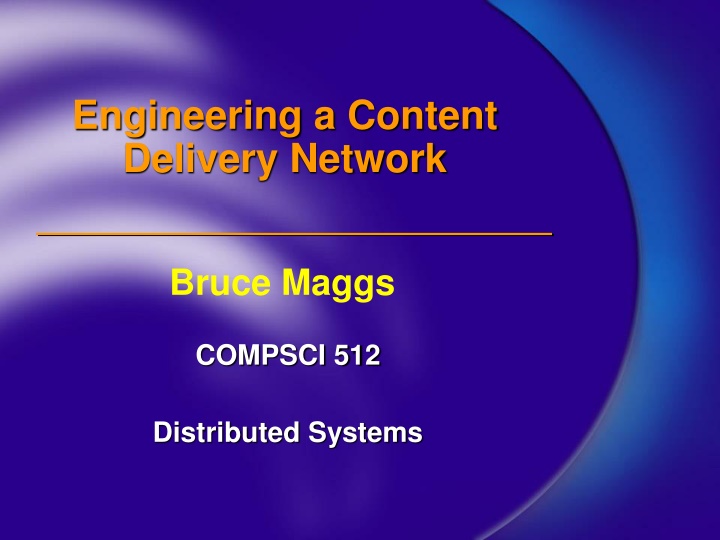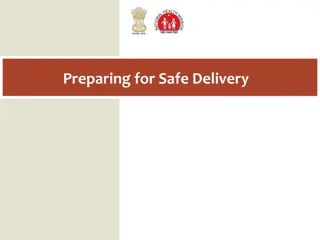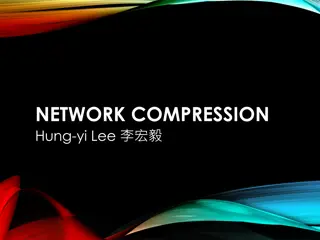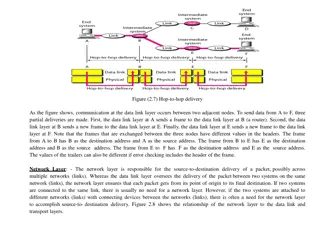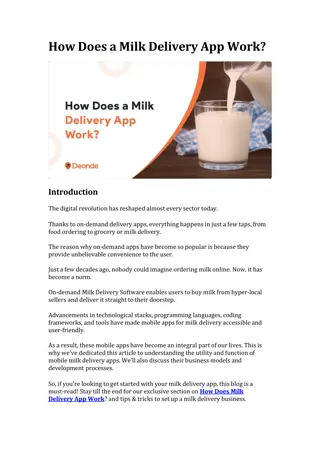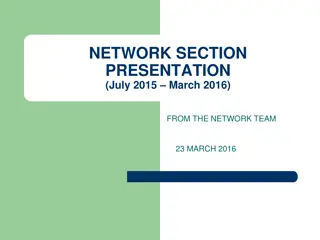Delivery Network
A Content Delivery Network (CDN) like Akamai plays a crucial role in distributing web content globally. This network deployment spans over 160,000+ servers across 1,200+ networks in 95+ countries. Akamai's impressive statistics include peak bit rates of 13.1 Tbps and handling 2.59 trillion daily HTTP requests. The design themes of redundancy, self-assessment, and fail-over strategies ensure robust performance. Services like Yahoo, Amazon, and Microsoft benefit from FirstPoint DNS and embedded image delivery. Akamai's DNS resolution system, live streaming architecture, and SiteShield for FBI.gov highlight its cutting-edge technologies.
Download Presentation

Please find below an Image/Link to download the presentation.
The content on the website is provided AS IS for your information and personal use only. It may not be sold, licensed, or shared on other websites without obtaining consent from the author.If you encounter any issues during the download, it is possible that the publisher has removed the file from their server.
You are allowed to download the files provided on this website for personal or commercial use, subject to the condition that they are used lawfully. All files are the property of their respective owners.
The content on the website is provided AS IS for your information and personal use only. It may not be sold, licensed, or shared on other websites without obtaining consent from the author.
E N D
Presentation Transcript
Engineering a Content Delivery Network Bruce Maggs COMPSCI 512 Distributed Systems
Network Deployment 160000+ Servers 1200+ Networks 95+ Countries Current Installations
Akamai Statistics Peak bit rate: 13.1 Tbps on 3/13/2013 Peak HTTP daily requests: 2.59 trillion on 9/23/12 560.1M unique IPv4 addresses connected to Akamai on 3/6/2012 683M in Q3 2012
Part I: Services http://www.yahoo.com http://www.amazon.com http://windowsupdate.microsoft.com http://www.apple.com/quicktime/whatson http://www.fbi.gov
Design Themes Redundancy Self-assessment Fail-over at multiple levels Robust algorithms
FirstPoint DNS (e.g., Yahoo!) Selects from among several mirror sites operated by content provider
Embedded Image Delivery (e.g., Amazon) Embedded URLs are Converted to ARLs <html> <head> <title>Welcome to xyz.com!</title> </head> <body> <img src= <img src= <h1>Welcome to our Web site!</h1> <a href= page2.html >Click here to enter</a> </body> </html> ak http://www.xyz.com/logos/logo.gif > http://www.xyz.com/jpgs/navbar1.jpg >
Akamai DNS Resolution xyz.com 5 .com .net Root (Verisign) 4 10.10.123.5 xyz.com s nameserver akamai.net 8 a212.g.akamai.net 7 9 6 15.15.125.6 select cluster ak.xyz.com 10g.akamai.net 11 20.20.123.55 Akamai High-Level DNS Servers 12a212.g.akamai.net 30.30.123.513 Akamai Low-Level DNS Servers select servers within cluster Local Name Server 3 End User 14 16 1 2 Browser s Cache 15 OS
Live Streaming Architecture 1 2 3 4 x Satellite Downlink Satellite Uplink 1 2 3 4 1 2 3 4 1 2 3 4 X X X X Entry Point Encoding 1 2 3 4 x Top-level reflectors Regions
SiteShield (www.fbi.gov) A K A M A I Hacker! A K A M A I Hacker! Content provider s website A K A M A I Hacker!
Part II: Failures 1. Hardware 2. Network 3. Software 4. Configuration 5. Misperceptions 6. Attacks
Hardware / Server Failures Linux boxes with large RAM and disk capacity, Windows servers Sample Failures: 1. Memory SIMMS jumping out of their sockets 2. Network cards screwed down but not in slot 3. Etc.
Akamai Cluster Servers pool resources RAM Disk Throughput
View of Clusters buddy suspended hardware failure odd man out suspended datacenter
Network Failures E.g., congestion at public and private peering points, misconfigured routers, inaccessible networks, etc., etc., etc.
Core Points X 1 2 3 4 Core point X is the first router at which all paths to nameservers 1, 2, 3, and 4 intersect. X can be viewed as the straddling the core and the edge of the network.
Core Points 500,000 nameservers reduced to 90,000 core points 7,000 account for 95% end-user load
Engineering Methodology C programming language (gcc). Reliance on open-source code. Large distributed testing systems. Burn-in on invisible system. Staged rollout to production. Backwards compatibility.
Perceived Failures Examples 1. Personal firewalls 2. Reporting tools 3. Customer-side problems 4. Third-party measurements
